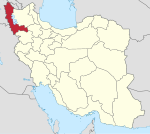Urmia
Urmia
ارومیه | |
|---|---|
City | |
Clockwise from top: Skyline of the city,Jameh Mosque of Urmia,Segonbad | |
| Nickname: Cradle of Water | |
| Coordinates:37°32′38″N45°03′53″E/ 37.54389°N 45.06472°E[1] | |
| Country | Iran |
| Region | 3 |
| Province | West Azerbaijan |
| County | Urmia |
| Bakhsh | Central |
| Government | |
| •Mayor | Hossein Mahdizadeh |
| •Parliament | Vahid Jalalzadeh,Salman Zaker&Ruhollah Hazratpour |
| Elevation | 1,332 m (4,370 ft) |
| Population (2016 census) | |
| •Urban | 736,224[2] |
| •Metro | 1,000,000[citation needed] |
| • Population Rank in Iran | 10th |
| Time zone | UTC+3:30(IRST) |
| Area code | 044 |
| Website | urmia |
 | |
Urmia(Persian:ارومیه;pronounced[oɾumiˈje])[a]is the largest city inWest Azerbaijan ProvinceofIran.In theCentral DistrictofUrmia County,it is capital of the province, the county, and the district.[5]
The city lies at an altitude of 1,330 metres (4,360 ft) above sea level along theShahar Riveron theUrmia Plain.Lake Urmia,one of the world's largestsalt lakes,lies to the east of the city, and theborderwithTurkeylies to the west.
Urmia is the10th-most populouscity inIran.At the 2006 census, its population was 577,307 in 153,570 households.[6]The following census in 2011 counted 667,499 people in 197,749 households.[7]The latest census in 2016 showed a population of 736,224 people in 225,050 households.[2]The majority of the city's residents areAzerbaijanis,with a large minority ofKurds,and a smaller number ofAssyrians,andArmenians,as well asPersian-speakers who moved to the city mostly for employment.[8]
The city is the trading center for a fertile agricultural region where fruits (especiallyapplesandgrapes) andtobaccoare grown. Even though the majority of the residents of Urmia are Muslims, the Christian history of Urmia is well preserved and is especially evident in the city's many churches and cathedrals.
An important town by the 9th century, the city has had a diverse population which has at times included Muslims (ShiasandSunnis), Christians (Catholics,Protestants,Nestorians,andOrthodox),Jews,BaháʼísandSufis.Around 1900 Christians made up more than 40% of the city's population; however, in the next decades most of the Christians were either killed by the advancing Ottoman troops or in raids by Kurdish tribes[9][10]or fled shortly after the end of the war.[11][12][13]
Urmia, Takab and Piranshahr respectively have the highest number of registered provincial sites in the list of national sites.[14]
Etymology
Richard Nelson FryesuggestedUrartianorigin for the name,[15]whileT. Burrowconnected the origin of the name Urmia toIndo-Iranianurmi- "wave" and urmya- "undulating, wavy".[16]
The name could also derive from the combination of theAssyrian AramaicwordsUr(ܐܘܪ;a common name for cities aroundMesopotamia,meaning "city" ) andMia(Syriac:ܡܝܐ,lit. 'water'), "City of Water" referring to the greatLake Urmianearby.[17]CompareUrhay,Ur of the Chaldees.
Variants and alternatives
As of 1921, Urmia was also called,UrumiaandUrmi.[18][19]During thePahlavi dynasty(1925–1979), the city was calledRezaiyeh(رضائیه)[b]afterReza Shah,the dynasty's founder, whose name ultimately derives from the Islamic concept ofridavia theEighth ImaminTwelverShia Islam,Ali al-Ridha.
In hisseyahatname,Evliya Çelebireferred to the city asRûmiyye(Ottoman Turkish:رومیه), also mentioning that the Mongols called the cityUrumiye(Ottoman Turkish:اورمیه), PersiansRûmiyye-i Kübrâ(Ottoman Turkish:رومیه كبری), and some historiansTürkistân-ı İrân(Ottoman Turkish:تركستان ایران), which he justified by the considerable amount of Turkomanawliyain the city.[20]
Due to the city's contact with many ethnic groups and cultures throughout its history, the name of the city has many linguistic variants:
- Persian:ارومیه,pronounced[oɾumiˈje][a]
- Armenian:Ուրմիա,romanized:Urmia[21]
- Azerbaijani:اورمیه,romanized:Ūrmiya,orاورمو,Ūrmū[22]
- Kurmanji Kurdish:ئورمیە,romanized:Ûrmiye[23]
- Sorani Kurdish:ورمێ,romanized:Wirmê[24]
- Syriac:ܐܘܪܡܝܐ,romanized:Urmia[25]
History


According toVladimir Minorsky,there were villages in theUrmia Plainas early as 2000BC, with their civilization under the influence of theKingdom of Van.Excavations of the ancient ruins near Urmia led to the discovery of utensils that date to the 20thcentury BC. In ancient times, the west bank of Urmia Lake was calledGilzan,and in the 9thcentury BC an independent government ruled there, which later joined theUrartuor Manna empire; in the 8thcentury BC, the area was a vassal of theAsuzh governmentuntil it joined theMedian Empire.
Assyrianswho did survive the invasion ofBaghdadbyTimurfled through northern Iraq up into the Hakkari Mountains to the west of Lake Urmia and the area remained as their homeland until the 19th century.[26][27]
During theSafavidera, the neighboringOttoman Turks,who were the archrivals of the Safavids,[28]made several incursions into the city and captured it on more than one occasion, but the Safavids successfully regained control over the area. When in 1622, during the reign of Safavid kingAbbasI(r. 1588–1629)Qasem Sultan Afsharwas appointed governor ofMosul,[29][30]he was forced to leave his office shortly afterwards due to the outbreak of aplague.[30]He moved to the western part ofAzerbaijan,and became the founder of theAfsharcommunity of Urmia.[30]The city was the capital of theUrmia Khanatefrom 1747 to 1865. The first monarch of Iran'sQajar dynasty,Agha Muhammad Khan,was crowned in Urmia in 1795.
Due to the presence of a substantialChristianminority at the end of the 19thcentury, Urmia was also chosen as the site of the first Christian missionaries from the United States in Iran in 1835 led byJustin Perkins(1805–1869) withAsahel Grant(1807–1844); and followed byFidelia Fiske(1816–1864),Joseph Gallup Cochran(1817–1871), andJoseph Plumb Cochran(1855–1905).[31]Another mission was soon underway in nearbyTabrizas well. DuringWorld War I,the population was estimated by Dr.Caujole to be 30,000 people, and a quarter of which (7,500) were Assyrians and 1,000 Jews.[13]
During the 19th century, the region became the center of a short-lived Assyrian renaissance with many books and newspapers being published inSyriac.Urmia was also the seat of aChaldean diocese.[32][33]
During late 1914 Ottoman forces under the command ofEnver Pashastepped up clandestine activity in the region with the aim of committing the Ottoman Empire to war.[34]DuringWorld War I,the city changed hands several times between theRussiansand the Ottoman troops and their Kurdish allies in the following two years.[35]In 1914, before the declaration of war against Russia, Ottoman forces crossed the border into Persia and destroyed Christian villages. Large-scale attacks in late September and October 1914 targeted many Assyrian villages, and the attackers neared Urmia.[36]Due to Ottoman attacks, thousands of Christians living along the border fled to Urmia.[37]
Many Christians fled during the Russian withdrawal from Azerbaijan at the beginning of January 1915,[38]and 20,000 to 25,000 refugees were left stranded in Urmia.[39]Nearly 18,000 Christians sought shelter in the city's Presbyterian andLazaristmissions. Although there was reluctance to attack the missionary compounds, many died of disease.[40]Between February and May (when the Ottoman forces pulled out), there was a campaign of mass execution, looting, kidnapping, and extortion against Christians in Urmia.[39]More than 100 men were arrested at the Lazarist compound, and dozens (including Mar Dinkha, bishop of Tergawer) were executed on 23 and 24 February.[41]
The Russian army advanced later in 1915.[citation needed]After Russia's withdrawal as a result of the 1917Russian Revolution,[42][43]about 5,000 Assyrian[44]and Armenian militia policed the area, but they frequently abused their power and killed Muslims without provocation.[45]

From February to July 1918, the region was engulfed by ethnic violence.[46][47]On 22 February, local Muslims and the Persian governor began an uprising against the Christian militias in Urmia. The better-organized Christians, led by Agha Petros, brutally crushed the uprising; hundreds (possibly thousands) were killed.[45]On 16 March, Mar Shimun and many of his bodyguards were killed by the Kurdish chieftainSimko Shikak,probably at the instigation of Persian officials fearing Assyrian separatism, after they met to discuss an alliance. Assyrians went on a killing and looting spree; unable to find Simko, they murdered Persian officials and inhabitants.[48][49]The Kurds responded by massacring Christians, regardless of denomination or ethnicity.[47]Christians were massacred in Salmas in June and in Urmia in early July,[46]and many Assyrian women were abducted.[50]
Christian militias in Azerbaijan were no match for the Ottoman army when it invaded in July 1918.[45]Tens of thousands of Ottoman and Persian Assyrians fled south toHamadan,where the BritishDunsterforcewas garrisoned, on 18 July to escape Ottoman forces approaching Urmia underAli İhsan Sâbis.[51][52]The Ottoman invasion was followed by killings of Christians, including Chaldean archbishopToma Audo,and the sacking of Urmia.[53][47]
Demographics
| Year | Pop. | ±% p.a. |
|---|---|---|
| 1986 | 300,746 | — |
| 1991 | 357,399 | +3.51% |
| 1996 | 435,200 | +4.02% |
| 2006 | 583,255 | +2.97% |
| 2011 | 667,499 | +2.74% |
| 2016 | 736,224 | +1.98% |
| source:[54] | ||
Ethnic composition
The city has been home to variousethnic groupsduring its history. The population of Urmia in the early Islamic period was Christian.[55]In late 19th century,George Curzonreported a population of 30 to 40 thousand people, chieflyAfshars,Nestorians, Jews, and Armenians,[56]while other sources also referred to an additional Persian community.[57]At the beginning of the 20thcentury, the city had a significant Christian minority (Assyrians and Armenians).[11][58]According to Macuch, and Ishaya, the city was the spiritual capital of theAssyrians,who were influenced by four Christian missions that had been established in the city in the period from 1830 to the end ofWorld War I.[59]A large number of the Assyrians and Armenians were killed in 1914 during theArmenianandAssyriangenocides,[60]which resulted in a change in the city's demographics.[59]In the fourteenth edition of Encyclopædia Britannica from 1929, the town's population was roughly estimated to be 45 thousand before the war, mainly being Turkish with Armenian and Nestorian minorities.[61]During the era ofReza Shah Pahlavi,Iranian Assyrians were invited to return to the region, and several thousand did return. There are around 5,000 Assyrians remaining in the city.[62]
Until theIran crisis of 1946and theEstablishment of the State of Israelin 1947, several thousand Jews also lived Urmia, and their language (Lishán Didán) is still spoken by an ageing community inIsrael.
According to theFederal Research DivisionofLibrary of Congress,ethnic Azeris form around 40% of the population of Urmia region.[63]The majority of the city's residents are Azerbaijanis, with a large minority of Kurds, and a smaller number of Assyrians, and Armenians, as well as Persian-speakers who moved to the city mostly for employment.[8]
The majority of the population can speak the official language of Iran,Persian,in addition to their own native tongue.[64][65]
Religion
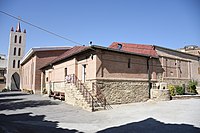

The city is the archiepiscopal see of theEastern CatholicMetropolitanChaldean Catholic Archeparchy of Urmyā,which has asuffraganinSalmas.There are alsoProtestants,Church of the Eastadherents andArmenian Orthodox.There are four churches in the central part of the city, two being Assyrian Church of the East, one Armenian, and one Chaldean.[66][67]
When 17th-century explorerEvliya Çelebivisited the region, the city's Muslim population was mostly Sunni and not yet converted to Shia Islam.[20]Around 1900,Christiansmade up more than 40% of the city's population; however, most of the Christians were either killed when theOttoman EmpireinvadedQajar Iranand committedgenocideagainst Urmia'sAssyrianandArmenianpopulation[68][69]or fled shortly after the end of the war. Approximately 15,000Assyriansreside in northern Iran, in Urmia and various Assyrian villages in the surrounding area.[70]TheChristian historyof Urmia is well preserved and is especially evident in the city's many churches and cathedrals.
Parks and touristic centres
The tourist attractions of the city of Urmia include many parks and coastal villages lying on or near the shores of Lake Urmia. The oldest park in Urmia, called Park-e Saat, was established in the firstPahlaviera. Urmia's largest park is Ellar Bagi Park (Azerbaijani "People's Garden" ) along the Shahar Chayi, or the "City River".
Lakes and ponds
- Urmia LakeNatural Park
- Hasanloo Lake
- Marmisho lake
- Shahrchay ِDam
- Urmia Lake Islands
Lagoons
- Haft Abad
- Soole Dokel
- Dana Boğan
- Ali Pancesi
- Isti Sou
Parks
- Park-e Saat (Clock Park)
- Park-e Jangali (Jungle Park)
- Ellar Bagi (People's Garden)
- Park-e Shahr (City Park)
- Park-e Saheli (Riverside Park)
- Park-e Shaghayegh
- Alghadir Park
- Tokhmemorghi (Oval) Park
- Ghaem Park
Scenic coastal villages:
- Chichest
- Bari
- Fanoos
- Sier
- Band
- Khoshako
Landscape attractions:
- Qasimlu Valley
- Kazem Dashi Islet inLake Urmia
- Kashtiban Village
- Imamzada Village
- Silvana Region
- Rashekan to Dash Aghol
- Nazloo
- Dalamper
- Kaboodan Island[71]
Climate
Urmia's climate iscold semi-arid climate(Köppen:BSk,Trewartha:BS), bordering onhumid continental climate(Köppen:Dfa,Trewartha:Dc), with cold winters, mild springs, hot dry summers, and cool autumns. Precipitation is heavily concentrated in late autumn, winter (mostly in the form of snow), and especially spring, while precipitation is scarce in summer. Temperatures in Urmia are much colder than most of the remainder of Iran. The drought ofUrmia Lakewill have a negative impact on the climate of the region.
Being on thedownwindandrain shadowside of theZagros mountains,its winters are relatively drier and less snowy thanHakkari's (to the west) in southeastern Turkey due to thefoehn effect.[72]
| Climate data for Urmia (Orumiyeh) 1991-2020, extremes 1961-2020 | |||||||||||||
|---|---|---|---|---|---|---|---|---|---|---|---|---|---|
| Month | Jan | Feb | Mar | Apr | May | Jun | Jul | Aug | Sep | Oct | Nov | Dec | Year |
| Record high °C (°F) | 16.4 (61.5) |
19.8 (67.6) |
26.0 (78.8) |
30.8 (87.4) |
32.0 (89.6) |
37.0 (98.6) |
39.9 (103.8) |
39.2 (102.6) |
36.2 (97.2) |
30.0 (86.0) |
22.8 (73.0) |
21.4 (70.5) |
39.9 (103.8) |
| Mean daily maximum °C (°F) | 3.6 (38.5) |
6.6 (43.9) |
12.0 (53.6) |
17.7 (63.9) |
22.8 (73.0) |
28.4 (83.1) |
31.5 (88.7) |
31.4 (88.5) |
27.3 (81.1) |
20.5 (68.9) |
12.0 (53.6) |
5.8 (42.4) |
18.3 (64.9) |
| Daily mean °C (°F) | −1.8 (28.8) |
0.7 (33.3) |
5.9 (42.6) |
11.3 (52.3) |
16.0 (60.8) |
21.2 (70.2) |
24.2 (75.6) |
23.6 (74.5) |
19.1 (66.4) |
12.8 (55.0) |
5.6 (42.1) |
0.3 (32.5) |
11.6 (52.8) |
| Mean daily minimum °C (°F) | −6.4 (20.5) |
−4.6 (23.7) |
−0.2 (31.6) |
4.4 (39.9) |
8.4 (47.1) |
12.5 (54.5) |
15.8 (60.4) |
15.0 (59.0) |
10.4 (50.7) |
5.7 (42.3) |
0.3 (32.5) |
−4.2 (24.4) |
4.8 (40.6) |
| Record low °C (°F) | −22.8 (−9.0) |
−22 (−8) |
−19 (−2) |
−12 (10) |
−1.8 (28.8) |
3.9 (39.0) |
8.4 (47.1) |
7.8 (46.0) |
2.2 (36.0) |
−5 (23) |
−13.4 (7.9) |
−20 (−4) |
−22.8 (−9.0) |
| Averageprecipitationmm (inches) | 27.4 (1.08) |
28.6 (1.13) |
44.2 (1.74) |
59.4 (2.34) |
38.8 (1.53) |
9.0 (0.35) |
5.1 (0.20) |
2.6 (0.10) |
4.4 (0.17) |
24.3 (0.96) |
40.5 (1.59) |
28.5 (1.12) |
312.8 (12.31) |
| Average precipitation days(≥ 1.0 mm) | 4.8 | 4.3 | 6.1 | 7.2 | 6.8 | 2.0 | 0.7 | 0.6 | 1.0 | 3.5 | 5.3 | 5.0 | 47.3 |
| Average snowy days | 8.5 | 7.5 | 3.7 | 0.8 | 0.0 | 0.0 | 0.0 | 0.0 | 0.0 | 0.3 | 1.5 | 5.5 | 27.8 |
| Averagerelative humidity(%) | 74 | 68 | 59 | 57 | 56 | 47 | 46 | 46 | 48 | 58 | 70 | 75 | 58.7 |
| Averagedew point°C (°F) | −6.1 (21.0) |
−5.1 (22.8) |
−2.3 (27.9) |
2.0 (35.6) |
6.1 (43.0) |
8.3 (46.9) |
10.8 (51.4) |
10.1 (50.2) |
6.7 (44.1) |
3.9 (39.0) |
0.0 (32.0) |
−3.9 (25.0) |
2.5 (36.6) |
| Mean monthlysunshine hours | 142 | 172 | 203 | 227 | 285 | 353 | 369 | 353 | 306 | 237 | 175 | 136 | 2,958 |
| Source: NOAA[73](snow days 1961-1990[74])(extremes from both) | |||||||||||||
Sport
Sports are an important part of Urmia's culture. The most popular sport in Urmia is volleyball. Urmia is considered Iran's volleyball capital, and that is because of the ranks thatShahrdari Urmia VCgot inIranian Volleyball Super Leagueand for the great volleyball players who play on theIran men's national volleyball team(such asSaed Marouf,Abdolreza Alizadeh,andMilad Ebadipour) and first-class coaches in Iran. Recently, Urmia has also been called "the city of volleyball lovers" by theFédération Internationale de Volleyball(International Volleyball Federation, FIVB) official website.
The2010 Asian Men's Cup Volleyball Championshipwas held inGhadir Arenain Urmia,2012 WAFF Futsal Championship,and the2012 Asian Junior Men's Volleyball Championshipwas also held in Urmia. It is also one of the venues of the2019 FIVB Volleyball Men's Nations League.
Culture


Azerbaijanishold festivals and ceremonies such asNowruzandEid al-Adhalike other Iranian ethnic groups with small differences.[75]Ashikmusic is one of the features of the Turkish speaking people of the world. It has different versions in Iran. Meanwhile, as many experts of this art testify the Urmia Ashik, is the most original and oldest version in the world, which has preserved its origin until the present day. Ashik music has its unique styles. As a piece of the culture of Azerbaijan, Urmia Ashik music has been registered in Iran's national heritage.
Museums
- Natural History Museum – Displays the animals native to the vicinity of Urmia.
- Urmia Museum – Archaeological museum affiliated with the faculty ofShahid Beheshti University.
- Urmia Museum of Crafts and Classical Arts.
- Urmia Museum of َAnthropology.
Education

The first modern style school established in Urmia in 1834.[76]

Higher education
Urmia was an important centre forhigher educationapproximately a century ago; indeed, the medical college of Urmia, which was built byJoseph Cochranand a team of American medical associates in 1878, is the first modern university of Iran. Unfortunately, the college was shut down even before the establishment of the first official University of Iran,University of Tehran.Today, Urmia has become an important centre of education, with several state and private universities and institutes, including those listed below.
Universities in Urmia:
| University | Web Site |
|---|---|
| Urmia University | [1] |
| Malek Ashtar University of TechnologyUrmia Branch | [2] |
| Urmia University of Medical Sciences | [3] |
| Urmia University of Technology | [4] |
| Islamic Azad University of Urmia | [5] |
| Payame Noor University of Urmia | [6] |
| Elmi Karbordi Universityof Urmia | [7] |
| University College of Saba | [8] |
| University College of Azarabadegan | [9] |
| University College of Elm O fan | [10] |
| University College of Kamal | [11] |
| Shahid Beheshti Technical School | [12] |
| Ghazi Tabatabaee Technical School | [13] |
| The Girls Technical School of Urmia | [14] |
| Najand Institute of Higher Education | [15] |
| University College Afagh | [16] |
Libraries
- Allame TabatabayeeLibrary
- Central Library of Urmia
- Library of Ghaem
- Library of I.R. Iran Education Ministry
- Library of Imam Ali
- Library of kanoon parvaresh fekri
- Library of Khane-ye-Javan
- Library ofShahid Motahhari
- Library ofShahid Bahonar
- Library of Urmia Cultural and Artistical Center
Media
Television
Urmia has one state-owned television channel,Urmia TV,which broadcasts in bothAzerbaijani,andPersian,and internationally through satellite Intelsat902.[77]
Radio
Urmia has one radio channel broadcasting inKurdish,AzerbaijaniandPersian.The name of the local radio isChichest.[77]
Press
Among others, the city's print media include:
- Orumiye
- Barish news
- Sedaye Urmia
- Amanat
- Koosha
- Araz
Infrastructure
Transportation
Most of Urmia's residents travel by car through the system of roads andhighways.Urmia is also served bytaxisand publicbuses.There are also some private groups that provide services called "Phone-taxi."[citation needed]Two Tram-lines for Urmia are Planned.[citation needed]
Urmia is linked toEuropethroughTurkey'sroadsand Sero border crossing.Urmia Airport,which opened in 1964, was the first international airport inWest Azerbaijancounty,Iran.As of April 2015 it only has regularly scheduled domestic flights toTehran'sMehrabad International Airport,although there are plans to establish a direct flight between Urmia andErbil,due to the large number of passengers travelling between the two cities.[78][79]The city is recently connected toIran National Railways(IRIR,رجا).
Health systems
The Iranian government operates public hospitals in the Urmia metropolitan region. There are also a number of private hospitals and medical centers in the city. Hospitals include:[citation needed] Hospitals:
- 523 Artesh(Army) Hospital
- Arefian Hospital[80]
- Azerbaijan Hospital[81]
- Gholipour Children's Hospital
- Imam Khomeini Hospital[82]
- Imam Reza Hospital
- Milad international medical center[83]
- Motahari Hospital[84]
- Omid Hospital[85]
- Razi Psychiatry Hospital[86]
- Taleghani Hospital[87]
- Seyedoshohada Heart Hospital[88]
- Shafa Hospital[89]
- Shams Hospital[90]
- Solati Hospital[91]
Clinics:
- Fatimiye Pro-Medical Clinic
- Kosar Women's Pro-Medical Clinic
Consulates
The Turkish government has aconsulateon Beheshti Avenue.
People
During its history Urmia was the origin for many Iranian illumination[clarification needed]and modernization movements. The city was the hometown of numerous figures including politicians, revolutionaries, artists, and military leaders. Following is a partial list of some of the people who was born or lived in Urmia.
For a complete list see:Category:People from Urmia
-
Safi al-Din al-Urmawi,was a renowned musician and writer on the theory of music.
-
Haydar Khan e Amo-oghli,was a leftist revolutionary during the Iranian Constitutional Revolution and among the founders of the Communist Party of Iran.
-
Fatma Mukhtarova,was a Soviet opera singer.
-
Saeid Marouf,is an Iranianvolleyballplayer who plays as a setter for theIranian national teamwhich he captains.
-
Mehrsa Baradaran,an American law professor at theUniversity of California, Irvine,was born in Urmia
-
Davood Azad,is an Iranian classical and folk music singer.
-
Oyan Nazariani,is an Azerbaijani Beach wrestling and Greco-Roman wrestler born in Urmia. He is the head coach of the Azerbaijani beach wrestling team.[92]
Twin towns and sister cities
See also
- ArkofNuhorNoah
- Assyrian homeland
- Emirate of Bradost
- 64th Infantry Division of Urmia
- Russian Ecclesiastical Mission in Urmia
- Teppe Hasanlu
- Urmia Orthodokseta
![]() Media related toUrmiaat Wikimedia Commons
Media related toUrmiaat Wikimedia Commons
Notes
References
- ^OpenStreetMap contributors (17 February 2024)."Urmia, Urmia County"(Map).OpenStreetMap.Retrieved17 February2024.
- ^ab"Census of the Islamic Republic of Iran, 1395 (2016)".AMAR(in Persian). The Statistical Center of Iran. p. 04. Archived fromthe original(Excel)on 30 August 2022.Retrieved19 December2022.
- ^"Orūmīyeh | Iran | Britannica".
- ^Urmia can be found atGEOnet Names Server,atthis link,by opening the Advanced Search box, entering "-3077456" in the "Unique Feature Id" form, and clicking on "Search Database".
- ^Habibi, Hassan (7 July 1369)."Approval of the organization and chain of citizenship of the elements and units of the country divisions of West Azerbaijan province, centered in the city of Urmia".Lamtakam(in Persian). Ministry of Interior, Council of Ministers. Archived fromthe originalon 20 December 2023.Retrieved20 December2023.
- ^"Census of the Islamic Republic of Iran, 1385 (2006)".AMAR(in Persian). The Statistical Center of Iran. p. 04. Archived fromthe original(Excel)on 20 September 2011.Retrieved25 September2022.
- ^"Census of the Islamic Republic of Iran, 1390 (2011)".Syracuse University(in Persian). The Statistical Center of Iran. p. 04. Archived fromthe original(Excel)on 20 January 2023.Retrieved19 December2022.
- ^abSadeghi, Karim; Richards, Jack C (18 May 2016). "The idea of English in Iran: an example from Urmia".Journal of Multilingual and Multicultural Development.37(4): 420.doi:10.1080/01434632.2015.1080714.ISSN0143-4632.S2CID147225654.
- ^Hellot-Bellier, Florence (2019). "The Resistance of Urmia Assyrians to Violence at the Beginning of the Twentieth Century".Let Them Not Return: Sayfo – The Genocide Against the Assyrian, Syriac, and Chaldean Christians in the Ottoman Empire.Vol. 26 (1 ed.). Berghahn Books. pp. 71, 95, 96.doi:10.2307/j.ctvw049wf.8.ISBN978-1-78533-498-6.JSTORj.ctvw049wf.8.
- ^Gaunt, David (2006). "Playing with Fire: Occupied Urmia".Massacres, Resistance, Protectors: Muslim-Christian Relations in Eastern Anatolia during World War I.Gorgias Press. pp. 81–120.doi:10.31826/9781463210816-009.ISBN978-1-4632-1081-6.
- ^ab"Urmia | Encyclopedia".
- ^"Assyrians in the History of Urmia, Iran".
- ^abE. J. Brill's First Encyclopaedia of Islam, 1913–1936, M.ThHoutsma, p.1035, 1987
- ^"ثبت ۳۴۳۱ قلم اثر آذربایجان غربی در سامانه جامع میراث فرهنگی کشور".17 May 2022.
- ^Richard Nelson Frye, The history of ancient Iran, München (1984), 48–49
- ^The Proto-Indoaryans, by T. Burrow, The Journal of the Royal Asiatic Society of Great Britain and Ireland, No.2 (1973), pp. 123–140, published by Cambridge University Press, see 139
- ^"Search Entry".assyrianlanguages.org.Retrieved23 November2020.
- ^Sykes, Percy (1921).A History of Persia.London: Macmillan and Company. p. 67.
- ^Chisholm, Hugh,ed. (1911)..Encyclopædia Britannica.Vol. 27 (11th ed.). Cambridge University Press. p. 800.
- ^abDankoff, Robert;Kahraman, Seyit Ali; Dağlı, Yücel (eds.).Evliyâ Çelebi Seyahatnâmesi: IV(in Ottoman Turkish). Yapı Kredi Yayınları. pp. 314–315.Retrieved18 October2022.
Moğol kavmi bu kal'aya Urumiye derler. Kavm-i Acem Rûmiyye-i Kübrâ derler. Ba'zı müverrihân Türkistân-ı İrân derler. Zirâ evliyâ-yı Türkmanı gâyet çokdur.
- ^Hakobyan T. Kh., Melik-Bakhshyan St. T., Barseghyan H. Kh.Dictionary of Toponyms of Adjacent Regions of Armenia, vol. 5,Yerevan University Publishing House ", 2001, nayiri
- ^"Urmu İranın havası çirkli olan 10 şəhəri siyahısında".Gunaz.TV.Retrieved13 July2022.
- ^"Parêzgarên Ûrmiyê û Colemêrgê liser pirsên ewlekariyê civîn encam dan"[The governors of Urmia and Hakkari met on security issues] (in Kurdish). Kurdistan24.Retrieved13 March2020.
- ^"بەندیخانەی ورمێ؛ بەندکراوێک بەگومانی تووشبوون بە بە ڤایرۆسی کرۆنا ڕەوانەی نەخۆشخانە کرا"(in Kurdish).Retrieved13 March2020.
- ^Thomas A. Carlson et al., "Urmia – ܐܘܪܡܝܐ” in The Syriac Gazetteer last modified 30 June 2014,http://syriaca.org/place/206.
- ^Gibb, Kramers, Lewis, Hamilton Alexander Rosskeen, Johannes Hendrik, Bernard (1992).The Encyclopaedia of Islam: New Edition Vol. 7(Encyclopaedia of Islam New ed.). p. 1032.
{{cite book}}:CS1 maint: multiple names: authors list (link) - ^Carl Skutsch (2013).Encyclopedia of the World's Minorities.Routledge. p. 149.ISBN978-1-135-19388-1.
- ^Rothman 2015,p. 236.
- ^Nasiri & Floor 2008,p. 248.
- ^abcOberling 1984,pp. 582–586.
- ^Speer, Robert Elliott (1911).The Hakim Sahib, the Foreign Doctor: A Biography of Joseph Plumb Cochran, M. D., of Persia.Revell. pp. 11–12.ISBN978-0-7950-1105-4.
- ^"CATHOLIC ENCYCLOPEDIA: Urmiah".
- ^Naby, Eden (September 2007)."Theater, Language and Inter-Ethnic Exchange: Assyrian Performance before World War I Eden Naby1"(PDF).Iranian Studies.40(4): 501–510.doi:10.1080/00210860701476510.S2CID161752252.Retrieved30 September2011.
- ^Gaunt, David (2015)."The Complexity of the Assyrian Genocide".Genocide Studies International.9(1): 83–103.doi:10.3138/gsi.9.1.05.S2CID129899863.
- ^Tejirian, Eleanor H.; Simon, Reeva S. (1 September 2012).Conflict, conquest, and conversion.Columbia University Press. pp. 350–351.ISBN978-0-231-51109-4.Retrieved7 April2013.
- ^Gaunt 2006,p. 129.
- ^Hellot-Bellier 2018,pp. 117, 125.
- ^Hellot-Bellier 2018,p. 120.
- ^abGaunt 2006,p. 110.
- ^Hellot-Bellier 2018,p. 122.
- ^Hellot-Bellier 2018,p. 126.
- ^Gaunt 2015,p. 94.
- ^Hellot 2003,p. 138.
- ^Koohi-Kamali 2003,p. 76.
- ^abcGaunt 2020,p. 78.
- ^abHellot 2003,pp. 138–139.
- ^abcGaunt 2020,p. 80.
- ^Koohi-Kamali 2003,pp. 76–77.
- ^Gaunt 2020,p. 79.
- ^Naby 2017,p. 167.
- ^Hellot-Bellier 2020,17.
- ^Kévorkian 2011,p. 744.
- ^Koohi-Kamali 2003,p. 77.
- ^Iran: Provinces and Cities population statistics
- ^"URMIYA",Encyclopaedia of Islam(edition 2)
- ^The Quarterly Review Volume 176.London: John Murray. 1893. p. 183.Retrieved17 September2022.
- ^Report of the Fifty-ninth Meeting of the British Association for the Advancement of Science Held at Newcastle-upon-Tyne in September 1889.London: John Murray. 1890. p. 176.Retrieved17 September2022.
- ^Baker, Patricia L.; Smith, Hilary; Oleynik, Maria (2014).Iran.Bradt Travel Guides.ISBN9781841624020.
- ^ab"ASSYRIANS IN IRAN".
- ^Hovannisian, Richard G. (31 December 2011).The Armenian Genocide.Transaction Publishers.ISBN9781412835923.
- ^Hooper, Franklin Henry; Garvin, James Louis; Cox, Warren E. (1929).The Encyclopedia Britannica.Encyclopedia britannica Company, Limited. p. 899.Retrieved17 September2022.
- ^Al-Jeloo, Nicholas (2010)."Evidence in Stone and Wood: The Assyrian/Syriac History and Heritage of the Urmia Region in Iran".Parole de l'Orient.35:1–15.
- ^Curtis, Glenn E. (2008).Iran: A Country Study.Washington D.C.: Federal Research Division of the Library of Congress. pp.97.ISBN978-0-8444-1187-3.
- ^دكتر م پناهايان، مجموعه اي در چهار جلد به نام "فرهنگ جغرافياي ملي تركان ايران زمين" سال 1351 Dr. M. Panahian, a four-volume collection entitled "National Geographical Culture of the Turks of Iran" in 1351
- ^سيري در تاريخ زبان ولهجه هاي تركي, دكتر جواد هئيت- چاپ سوم, سال1380,ص 307 A Journey in the History of Turkish Language and Dialects, Dr. Javad Hayat – Third Edition, 2001, p. 307
- ^Location of Nestorian Churches-https:// google /maps/place/Holy+Mary+Church/@37.5441966,45.0678303,244m/data=!3m1!1e3!4m2!3m1!1s0x0000000000000000:0x3a31bcdb0de639d3!6m1!1e1
- ^Location of Armenian and Chaldean churches-https:// google /maps/place/37%C2%B033'04.3%22N+45%C2%B003'57.9%22E/@37.5511954,45.0653628,244m/data=!3m2!1e3!4b1!4m2!3m1!1s0x0:0x0
- ^Hellot-Bellier, Florence (2019). "The Resistance of Urmia Assyrians to Violence at the Beginning of the Twentieth Century".Let Them Not Return: Sayfo – The Genocide Against the Assyrian, Syriac, and Chaldean Christians in the Ottoman Empire.Vol. 26 (1 ed.). Berghahn Books. pp. 95–96.doi:10.2307/j.ctvw049wf.8.ISBN978-1-78533-498-6.JSTORj.ctvw049wf.8.
- ^Gaunt 2006.
- ^Hooglund (2008),pp. 100–101.
- ^http:// bari.ir/bari/en/tours/jazebeha/kaboodan/[permanent dead link]
- ^Modeling the exceptional south Foehn event (Garmij) over the Alborz Mountains during the extreme forest fire of December 2005February 2014, Natural Hazards, Abbas Mofidi, Iman Soltanzadeh,Yadollah Yousefi, Azar Zarrin, MohsenSoltani, Jafar Masoompour Samakosh,Ghasem Azizi, et al. Retrieved 27 May 2022.
- ^"World Meteorological Organization climate normals for 1991-2020: Orumiyeh-40712"(CSV).ncei.noaa.gov(Excel).National Oceanic and Atmosoheric Administration.
{{cite web}}:CS1 maint: postscript (link) - ^"Oroomieh Climate Normals 1961–1990".National Oceanic and Atmospheric Administration.Retrieved27 December2012.
- ^Moosighi Asheghi Azarbaijan Sahrghi
- ^"معاون شهرسازی و معماری شهردار ارومیه خبر داد تخصیص بودجه 550 میلیارد تومانی شهرداری ارومیه"[The Deputy Mayor of Urmia for Urban Planning and Architecture announced the allocation of a budget of 550 billion Tomans for the Municipality of Urmia] (in Persian).
- ^ab"پایگاه اطلاع رسانی صدا و سیمای مرکز آذربایجان غربی"[West Azerbaijan Central Broadcasting Information Center] (in Persian).
- ^"Urmia-Erbil direct flights to be established in near future".Mehr News Agency.21 April 2019.Retrieved26 April2019.
- ^"Direct Flights to Start Between Urmia and Erbil: Iranian Official".Basnews.21 April 2019.Retrieved26 April2019.
- ^"Arefian hospital".
- ^"Azerbaijan Hospital".
- ^"Imam Khomeini Hospital".
- ^"Milad hospital".Archived fromthe originalon 3 December 2013.Retrieved1 December2013.
- ^"Motahari Hospital".
- ^"Omid Hospital".
- ^"Razi Hospital".
- ^"Taleghani Hospital".
- ^"Seyedoshohada Hospital".
- ^"Shafa Hospital".
- ^"Shams Hospital".
- ^"Solati Hospital".
- ^"Azərbaycan Güləş Federasiyasının iclası keçirilib".awf.az. 21 September 2020.Archivedfrom the original on 21 September 2020.Retrieved11 January2022.
- ^Urmia, Erzurum sign sisterhood agreement,retrieved 24 May 2015
- Gaunt, David (2020). "The Long Assyrian Genocide".Collective and State Violence in Turkey: The Construction of a National Identity from Empire to Nation-State.Berghahn Books. pp. 56–96.ISBN978-1-78920-451-3.
- Hellot, Florence (2003). "La fin d'un monde: les assyro-chaldéens et la première guerre mondiale" [The end of a world: the Assyro-Chaldeans and the First World War].Chrétiens du monde arabe: un archipel en terre d'Islam[Christians of the Arab world: an archipelago in the land of Islam] (in French). Autrement. pp. 127–145.ISBN978-2-7467-0390-2.
- Hellot-Bellier, Florence (2018). "The Increasing Violence and the Resistance of Assyrians in Urmia and Hakkari (1900–1915)".Sayfo 1915: An Anthology of Essays on the Genocide of Assyrians/Arameans during the First World War.Gorgias Press. pp. 107–134.ISBN978-1-4632-0730-4.
- Hellot-Bellier, Florence (2020)."Les relations ambiguës de la France et des Assyro-Chaldéens dans l'histoire. Les mirages de la" protection ""[The ambiguous relations of France and the Assyro-Chaldeans in history. The mirages of "protection" ].Les Cahiers d'EMAM(in French) (32).doi:10.4000/emam.2912.ISSN1969-248X.
- Hooglund, Eric(2008)."The Society and Its Environment"(PDF).In Curtis, Glenn E.;Hooglund, Eric(eds.).Iran: A Country Study.Area Handbook Series.United States Library of Congress,Federal Research Division(5th ed.).Washington, D.C.:United States Government Printing Office.pp.81–142.ISBN978-0-8444-1187-3.Retrieved13 October2013.
- Koohi-Kamali, Farideh (2003).The Political Development of the Kurds in Iran: Pastoral Nationalism.Palgrave Macmillan UK.ISBN978-0-230-53572-5.
- Kévorkian, Raymond(2011).The Armenian Genocide: A Complete History.Bloomsbury Publishing.ISBN978-0-85771-930-0.
- Naby, Eden(2017). "Abduction, Rape and Genocide: Urmia's Assyrian Girls and Women".The Assyrian Genocide: Cultural and Political Legacies.Routledge. pp. 158–177.ISBN978-1-138-28405-0.
- Nasiri, Ali Naqi; Floor, Willem M. (2008).Titles and Emoluments in Safavid Iran: A Third Manual of Safavid Administration.Mage Publishers. p. 309.ISBN978-1933823232.
- Oberling, P. (1984). "AFŠĀR".Encyclopaedia Iranica, Vol. I, Fasc. 6.pp. 582–586. Archived fromthe originalon 29 April 2011.
- Rothman, E. Nathalie (2015).Brokering Empire: Trans-Imperial Subjects between Venice and Istanbul.Cornell University Press.ISBN978-0801463129.

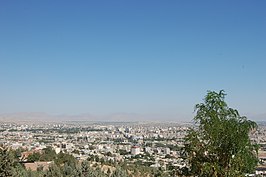





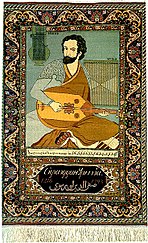

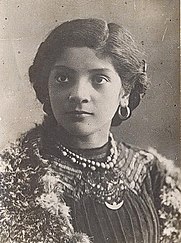

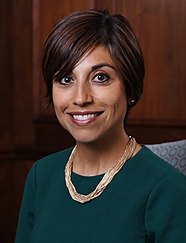
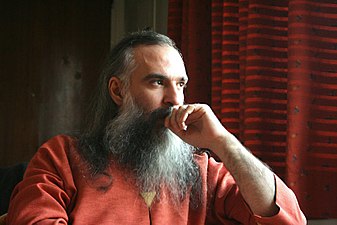
![Oyan Nazariani, is an Azerbaijani Beach wrestling and Greco-Roman wrestler born in Urmia. He is the head coach of the Azerbaijani beach wrestling team.[92]](https://upload.wikimedia.org/wikipedia/commons/thumb/e/e8/Oyan_N%C9%99z%C9%99riani.jpg/150px-Oyan_N%C9%99z%C9%99riani.jpg)
